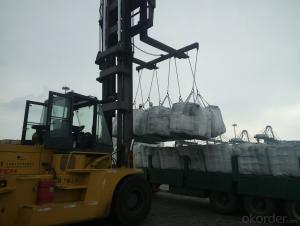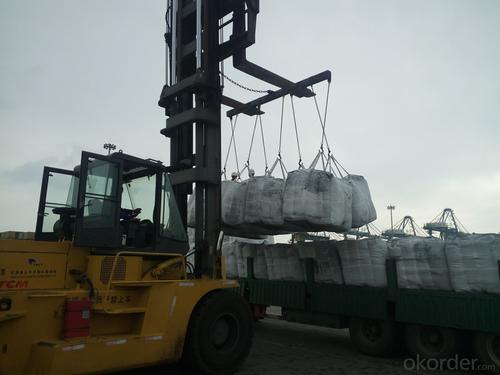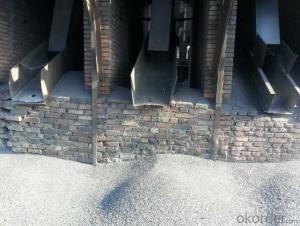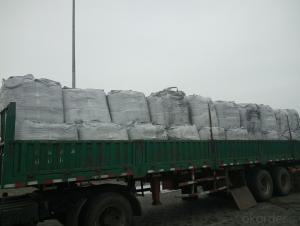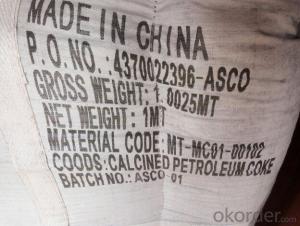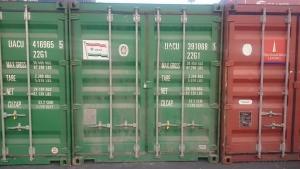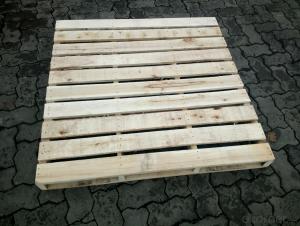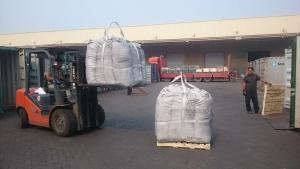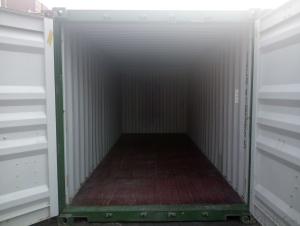Calcined Pitch Coke with FC 98.5% used in EAF
- Loading Port:
- Tianjin
- Payment Terms:
- TT OR LC
- Min Order Qty:
- 21 m.t.
- Supply Capability:
- 8000 m.t./month
OKorder Service Pledge
OKorder Financial Service
You Might Also Like
Introduction
Pitch Coke/Coal Tar Pitch is a kind of black brittleness and blocky piece, lustrously at normal temperature. It has special odour and poisonous and can be easily flame when melting, second-grade inflammable solid.
Pitch Coke/Coal Tar Pitch is obtained from powerfully processed coal tar. Compared to petroleum asphalt, the adhesiveness is better. Coal Tar Pitch is high quality tar production with high fixed carbon. It has excellent adhesion, waterproofing and resistance against seawater, oil and various chemicals. In these properties, it is much better than petroleum asphalt tar.
It can be used to produce painting, electrode, pitch coke, and tar felt. It also can be used as fuel and the raw material of asphalt carbon black.
Features:
The morphology, chemistry and crystallinity of recarburisers have a major impact on the overall casting cost. The combined application and cost benefits, which are derived through the use of Desulco, enable foundries to manufacture castings in a highly cost effective manner.
reduces
Recarburiser consumption
Power consumption
Inoculant consumption
MgFeSi consumption
Furnace refractory wear
Scrap rate
Tap to tap time
Slag inclusions risk
Chill
increases
Casting microstructure
Productivity
Process consistency
Carbon Recovery
Compared with calcined petroleum coke, acetylene coke and
graphite electrode scrap, Desulco yields the highest carbon
recovery and fastest dissolution time
Specifications:
CPC | |||
F.C.% | 98.5MIN | 98.5MIN | 98MIN |
ASH % | 0.8MAX | 0.8MAX | 1MAX |
V.M.% | 0.7 MAX | 0.7 MAX | 1 MAX |
SULFUR % | 0. 5MAX | 0. 7MAX | 1MAX |
MOISTURE % | 0.5MAX | 0.5MAX | 1MAX |
Pictures:
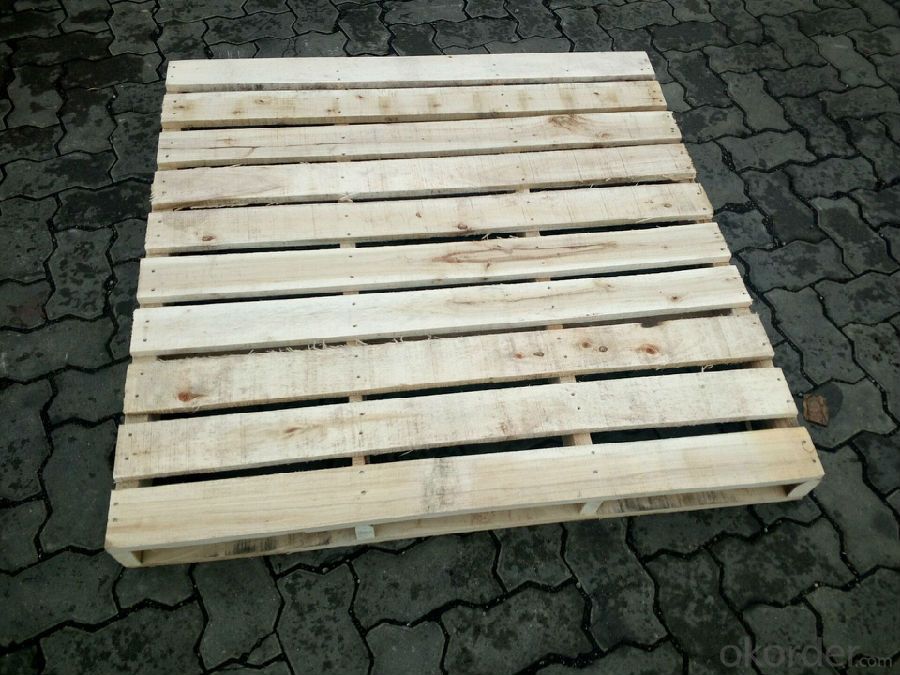
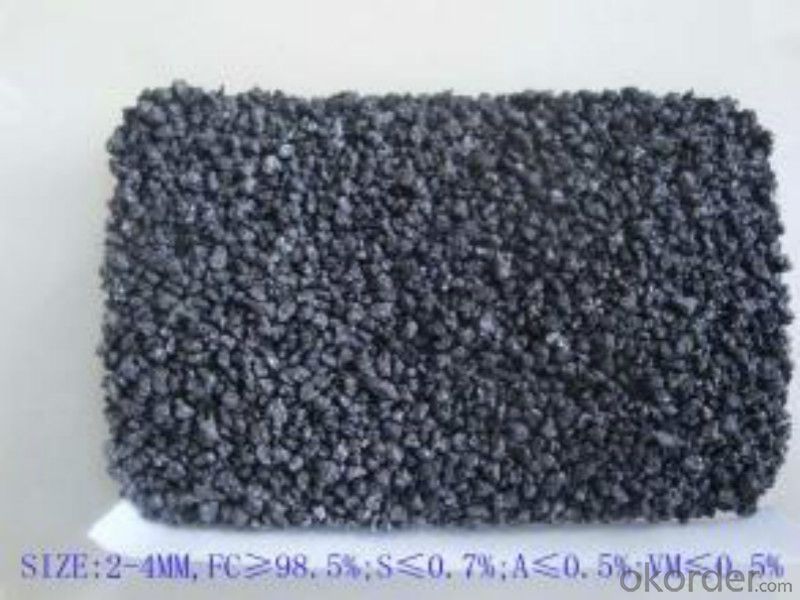

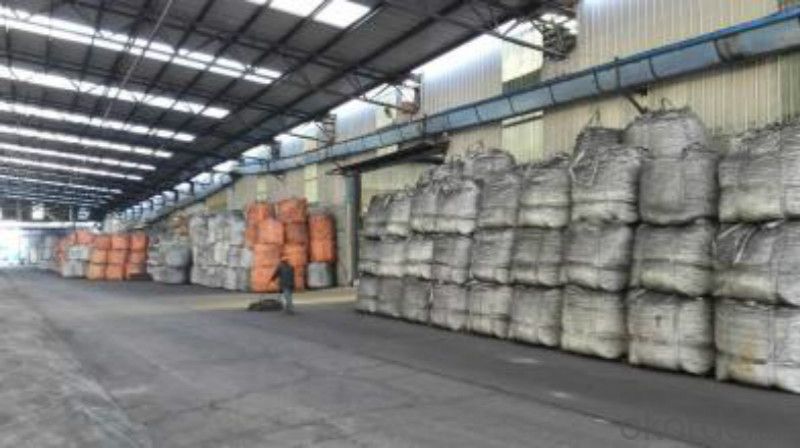
FAQ:
1.MOQ:2 Containers |
2.Size:1-3mm,1-5mm,2-6mm,3-5mm and as the customer's requirement |
3.Packing: 1 ton jumbo bag or 25kgs paper in bag |
4.Payment:T/T or L/C at sight |
5.Delivery time: within 15 days after receiving the deposit |
6.Usage: it is as carbon raiser,widely used in steelmaking,casting,casting iron,steel foundry,aluminum metallury. |
- Q: What is carbon offsetting in the fashion industry?
- In the fashion industry, carbon offsetting refers to the act of compensating for the greenhouse gas emissions produced during the production, transportation, and disposal of clothing and accessories. This involves investing in projects or activities that reduce or eliminate an equal amount of carbon dioxide (CO2) from the atmosphere, thereby counterbalancing the emissions generated by the industry. Fashion has gained notoriety for its significant role in environmental degradation, with textile production, manufacturing processes, and transportation all contributing to carbon emissions. Carbon offsetting offers a means for fashion brands and companies to take accountability for their carbon footprint and strive towards reducing their environmental impact. There are various methods for implementing carbon offsetting in the fashion industry. One prevalent approach involves supporting renewable energy initiatives, such as wind farms or solar power plants, that generate clean energy and reduce reliance on fossil fuels. By investing in these projects, fashion brands can offset a portion of their emissions by supporting the production of renewable energy, which displaces the need for energy derived from fossil fuels. Another method of carbon offsetting involves reforestation or afforestation projects. Trees play a critical role in absorbing CO2 from the atmosphere, so planting trees or conserving existing forests can help offset emissions. Fashion companies can invest in projects that protect existing forests from deforestation or support initiatives that plant trees in areas affected by deforestation or land degradation. Furthermore, some fashion brands choose to offset their carbon emissions by investing in projects that capture and store carbon dioxide from the atmosphere, such as carbon capture and storage (CCS) technologies. These projects primarily focus on removing CO2 emissions from industrial processes, preventing their release into the atmosphere. It is important to recognize that carbon offsetting should not be viewed as a comprehensive solution to the fashion industry's environmental impact. While it can help mitigate some emissions, it is crucial for brands to prioritize reducing their carbon footprint through sustainable practices. This includes using eco-friendly materials, improving energy efficiency, and implementing circular fashion initiatives. In summary, carbon offsetting serves as a strategy for the fashion industry to compensate for the greenhouse gas emissions generated throughout the supply chain. By investing in projects that reduce or eliminate an equal amount of CO2 from the atmosphere, fashion brands can take strides towards minimizing their environmental impact and working towards a more sustainable future.
- Q: What are the different types of carbon fibers?
- There are several different types of carbon fibers, including standard modulus carbon fiber, intermediate modulus carbon fiber, high modulus carbon fiber, and ultra-high modulus carbon fiber. These types vary in their strength, stiffness, and cost, making them suitable for different applications and industries.
- Q: What is fullerene?
- Fullerene refers to a unique form of carbon molecule that is composed of interconnected carbon atoms forming a cage-like structure. It was first discovered in the 1980s and has since attracted significant scientific interest due to its distinct properties and potential applications in various fields such as electronics, medicine, and materials science.
- Q: How is carbon used in the manufacturing of electronics?
- Carbon is used in several ways in the manufacturing of electronics. One of the primary uses of carbon in electronics is as a key component in the production of carbon nanotubes. These nanotubes have exceptional electrical conductivity and mechanical strength, making them ideal for use in various electronic devices. For instance, carbon nanotubes can be used to create high-performance transistors, which are essential components in computer chips. Additionally, carbon is utilized in the manufacturing of batteries for electronic devices. Carbon-based materials, such as graphite, are commonly used as the anode material in lithium-ion batteries. This is because graphite can store and release lithium ions efficiently, allowing for the rechargeable nature of these batteries. Furthermore, carbon is employed in the production of conductive coatings and inks used for printed circuit boards (PCBs). Carbon-based materials, such as carbon black or carbon nanotubes, are added to these coatings and inks to enhance their electrical conductivity. This enables the proper flow of electrical signals throughout the circuitry of electronic devices. In summary, carbon plays a crucial role in the manufacturing of electronics. It is used in the production of carbon nanotubes for high-performance transistors, as anode material in lithium-ion batteries, and in conductive coatings and inks for printed circuit boards. These applications highlight the versatility and importance of carbon in the electronics industry.
- Q: How is carbon used in the agricultural industry?
- Carbon is widely used in the agricultural industry for various purposes. One of the main uses of carbon in agriculture is as a soil amendment. Adding carbon-rich organic matter, such as compost or manure, to the soil improves its structure, fertility, and overall health. This is because carbon helps to increase the soil's ability to retain moisture, nutrients, and beneficial microorganisms, which are essential for plant growth. In addition to soil amendment, carbon is also used in the form of carbon dioxide (CO2) for greenhouse enrichment. In controlled environments like greenhouses, plants require a higher concentration of CO2 to enhance their growth and productivity. Carbon dioxide is released into the greenhouse to maintain optimal levels, which promotes photosynthesis and accelerates plant growth. Moreover, carbon-based fertilizers are commonly used in agriculture. These fertilizers, such as urea or ammonium nitrate, provide essential nutrients to crops and enhance their productivity. Carbon is an integral component of these fertilizers, aiding in the controlled release of nutrients and their effective uptake by plants. Furthermore, carbon is utilized in the production of pesticides and herbicides. Many of these agricultural chemicals contain carbon compounds that are specifically designed to target and control pests, diseases, and weeds that can harm crops. Carbon-based chemicals are often used because of their effectiveness and ability to break down naturally without causing long-term harm to the environment. Overall, carbon plays a crucial role in the agricultural industry by improving soil fertility, enhancing plant growth, and aiding in pest control. Its versatile applications make it an essential resource for sustainable and efficient farming practices.
- Q: How does carbon impact the pH balance of oceans?
- Carbon dioxide (CO2) dissolved in seawater reacts with water molecules to form carbonic acid, which lowers the ocean's pH. This decrease in pH, known as ocean acidification, has detrimental effects on marine life, especially organisms that rely on calcium carbonate to build their shells or skeletons. It disrupts the delicate balance of the marine ecosystem, affecting the growth, reproduction, and survival of various species, ultimately posing a threat to the biodiversity and health of our oceans.
- Q: What are the consequences of increased carbon emissions on political stability?
- Increased carbon emissions can have significant consequences on political stability. Firstly, it can lead to environmental degradation and natural disasters such as extreme weather events, rising sea levels, and food and water scarcity. These disasters can disrupt economies, displace populations, and create social unrest, ultimately straining political systems. Additionally, carbon-intensive industries often rely on fossil fuels, which can lead to economic disparities and inequality, further fueling social and political tensions. The resulting conflicts over resources, migration, and access to basic needs can undermine political stability and exacerbate existing political challenges. Overall, increased carbon emissions contribute to a range of environmental, economic, and social factors that can erode political stability at local, national, and global levels.
- Q: What is carbon sequestration?
- Carbon sequestration is the process by which carbon dioxide (CO2) is captured from the atmosphere and stored for an extended period of time, preventing it from being released and contributing to climate change. This technique aims to reduce the concentration of CO2 in the atmosphere, as this greenhouse gas is a major driver of global warming. Carbon sequestration can occur naturally through biological processes, such as photosynthesis in plants and algae, or it can be achieved through various artificial methods. Natural carbon sequestration occurs when plants, trees, and other vegetation absorb CO2 during photosynthesis and store it in their tissues. This process, known as terrestrial sequestration, plays a crucial role in reducing atmospheric CO2 levels. Additionally, oceans also act as a significant sink for CO2, absorbing and storing vast amounts of it. This is referred to as oceanic sequestration. Artificial carbon sequestration techniques involve capturing CO2 emissions from industrial processes, power plants, and other sources before they are released into the atmosphere. There are several methods for carbon capture, including pre-combustion capture, post-combustion capture, and oxy-fuel combustion. Once the CO2 is captured, it can be transported and stored underground in geological formations, such as depleted oil and gas fields or saline aquifers. This process is commonly known as carbon capture and storage (CCS) or carbon capture utilization and storage (CCUS). Carbon sequestration has gained significant attention due to its potential to mitigate climate change. By reducing the amount of CO2 in the atmosphere, it helps to slow down the pace of global warming and reduce the impacts of climate change. It is considered to be a crucial part of the broader strategy to achieve net-zero emissions, as it not only reduces future emissions but also removes CO2 that has already been emitted. However, carbon sequestration is not a silver bullet solution to climate change. It should be seen as a complementary approach to other mitigation efforts, such as transitioning to renewable energy sources and improving energy efficiency. Additionally, the long-term storage of CO2 requires careful monitoring and management to ensure its effectiveness and prevent any leakage or environmental risks. Overall, carbon sequestration is a vital tool in the fight against climate change, offering the potential to reduce greenhouse gas emissions and contribute to a more sustainable future.
- Q: How is carbon dating used to determine the age of fossils?
- Carbon dating is a scientific method used to determine the age of fossils and other organic materials. It relies on the fact that carbon-14, an isotope of carbon, is present in the atmosphere and taken up by living organisms while they are alive. Once an organism dies, it no longer takes in carbon-14 and the amount of this isotope begins to decrease over time as it undergoes radioactive decay. To determine the age of a fossil using carbon dating, scientists first extract a small sample of the fossil. This sample is then treated with chemicals to remove any contaminants and extract the carbon from the organic material. The extracted carbon is then converted into carbon dioxide gas, which is used to create graphite targets for measuring the levels of carbon-14. Scientists use a technique called Accelerator Mass Spectrometry (AMS) to count the number of carbon-14 and carbon-12 atoms in the sample. The ratio of carbon-14 to carbon-12 is then used to calculate the age of the fossil, based on the known half-life of carbon-14, which is approximately 5730 years. By comparing the amount of carbon-14 remaining in the fossil to the amount of carbon-14 in the atmosphere at the time the organism died, scientists can determine the approximate age of the fossil. This method is particularly useful for dating organic materials up to about 50,000 years old. For older fossils, other methods such as potassium-argon dating or uranium-lead dating are typically used.
- Q: How does carbon affect the formation of toxic algal blooms?
- Toxic algal blooms can be influenced by carbon in both direct and indirect ways. Eutrophication is one direct effect, where carbon, in the form of organic matter, enters water bodies from various human activities. This excess carbon acts as a nutrient for algae, promoting their rapid growth and leading to algal blooms. Another direct effect is the impact of carbon on the composition of algal communities. Certain algae species, known as harmful algal blooms (HABs), can produce toxins that are harmful to aquatic organisms, humans, and animals. The concentration of carbon can influence the growth and dominance of HABs, creating favorable conditions for their development. Furthermore, carbon affects the chemistry of the water, including its pH levels. Changes in pH can significantly affect the physiology and behavior of algae. Some toxic algae species are more tolerant of low pH levels, which can be worsened by increased carbon dioxide levels in the water. This creates an environment that favors the growth of harmful algal blooms. Indirectly, carbon can also impact the temperature and nutrient dynamics in water bodies. Climate change, driven by increased carbon emissions, can result in warmer temperatures, which stimulate algal growth. Additionally, changes in nutrient availability due to carbon-induced alterations in the water cycle can favor the development of toxic algal blooms. In conclusion, carbon plays a significant role in the formation of toxic algal blooms through eutrophication, changes in algal community composition, alterations in water chemistry, and indirect impacts on temperature and nutrient dynamics. Understanding these relationships is crucial for developing strategies to mitigate the occurrence and impact of harmful algal blooms.
Send your message to us
Calcined Pitch Coke with FC 98.5% used in EAF
- Loading Port:
- Tianjin
- Payment Terms:
- TT OR LC
- Min Order Qty:
- 21 m.t.
- Supply Capability:
- 8000 m.t./month
OKorder Service Pledge
OKorder Financial Service
Similar products
Hot products
Hot Searches
